Key Points
- Tongue tie (Ankyloglossia) is a condition where a baby has a tight or shortened frenulum under the tongue
- Tongue and lip ties can affect breastfeeding, leading to painful feeds and attachment issues
- Tongue ties are graded from Class 1 to Class 4
- Symptoms vary, and not all cases cause problems
- Parents have choices regarding treatment
What You Need To Know About Your Baby's Tongue or Lip Tie
Most of us have heard of tongue tie, but lip tie is less commonly understood. The correct name for tongue tie is Ankyloglossia (glossia means tongue) and is a condition some children are born with.
A baby with tongue tie has a tight or shortened frenulum under their tongue which restricts a full range of tongue movement. It also means their tongue can’t form a groove or extend far enough so the mother’s nipple is correctly positioned for comfortable breastfeeding.
In young babies, tongue tie problems are generally related to feeding but as they get older, speech can also be affected.
A baby with lip (or labial) tie has a tight or shortened frenulum connecting their upper lip to the gums. When a baby has both a tongue and lip tie, there is restriction of their tongue movements and lip positions when they feed.

What else to look for:
Both tongue and lip tie are also known as Midline Defects. Imagine an invisible line running straight down from the forehead through to the chin. Defects down the middle of the face tend to be caused by the same factors.
Midline facial issues can run in families, so genetic influences play a role. Other midline defects include cleft lip and palate, cleft chin, having extra or missing teeth or a narrowing of the nasal passages.
Why is Tongue Tie so common these days?
There are a few theories for this. Some people think it’s because we’re more aware of the condition, so health practitioners and parents check for it. The old adage “What you seek, you find” comes into play.
Others believe it’s related to a return to the popularity of breastfeeding. This can be more challenging than bottle feeding for a baby with tongue tie.
We’ve gotten better in understanding why breastfeeding can be difficult for some mothers. In turn, this has meant we have developed solutions for many problems.
Painful breastfeeding, in particular nipple pain, has long been a cause for mothers to stop breastfeeding. But now we look for tongue tie to be one reason for painful feeding.
Does folic acid cause Tongue Tie?
Midline defects tend to be influenced by deficiencies in particular nutrients. During early pregnancy when the midline is forming, a mother’s nutritional status has a direct affect on foetal development.
For example, our understanding of the benefits of folic acid supplementation has had a profound effect on reducing the number of babies born with Spina Bifida.
Perhaps the issue with folic acid lies with a percentage of the population who cannot metabolise folic acid correctly, due to the absence of a liver enzyme needed to change folic acid into a useable form.
This is known as the MTHFR gene mutation defect, affecting around 20-40% of the population. This means that women with this gene may be taking the recommended dose of folic acid however, they are still deficient.
Do Tongue and Lip Tie always cause problems?
No, it’s really dependent on the individual mother and her baby. There are different degrees of tongue tie and there is not always a problem with feeding. But it’s worth remembering that tongue and lip tie can also cause problems with swallowing and speech as well as correct alignment of the teeth.
Some mothers don’t experience any problems breastfeeding their baby with a tongue tie and can be quite surprised when they find out there is one.
Some dentists with expertise in tongue tie management report that mothers may develop their own ways of breastfeeding so the tongue tie doesn’t impact as much. They tend to compensate for attachment and discomfort issues.
But at the stage where milk supply is not influenced so much by hormones and more by the baby’s correct sucking, then tongue tie can become a problem.

It’s worth remembering:
The tongue has more uses than just for feeding when we’re small. Throughout our lives we use our tongue for a range of purposes. Habits which start in infancy can have a potential for long term compromise. Later treatments to correct problems may not be as effective.
Any restriction of any body part has the potential to impact on normal function.
What does a Tongue Tie look like?
There are a range of differences in tongue tie. They can be almost subtle with only a short restriction to the extension of the tongue, to causing a heart shape at the tip.
When tongue tie only affects the underside of the tongue and isn’t as clear to see, this is called a sub-mucousal or posterior tongue tie.
Symptoms of Tongue Tie
These vary depending on the individual baby, but can include -
- The baby not being able to poke their tongue out beyond their lips.
- They can’t touch the roof of their mouth with their tongue.
- They can’t move their tongue sideways.
- The tip of their tongue looks square and flat instead of pointy.
- The tip of their tongue might have a “notch” or heart shaped appearance.
- In older children their bottom teeth may looked pulled in.
Different grades of Tongue Tie
A Hazelbaker Assessment Tool is commonly used by health practitioners to assess the extent of a baby’s tongue tie.
- Class 1 tie means the frenulum is attached at the tip of the tongue. These are the easiest to see.
- Class 2 ties go a bit further back from the tip of the tongue.
- Class 3 ties are close to the base of the tongue.
- Class 4 ties aren’t as easily seen and need to be felt to be diagnosed. They sit underneath the mucous membrane beneath the tongue. Babies with a posterior tongue tie can look as if they have a short tongue.
Classes 1, 2 and 3 are also called anterior tongue ties.
Different Grades of Lip Tie
Lip ties are graded the same way as tongue ties.
Class 1 are very small and reach from the underside of the top lip to the top of the gum. They can then range up to Class 4 where the frenulum connects the top lip through and underneath the gums where the baby’s front teeth will meet.
A gap between the front two teeth is called a diastema. One of the causes for this is when the frenulum extends beyond the gum line creating a space between the teeth.
Seven interesting tips about tongue tie:
- Boys are more likely than girls to have a tongue tie.
- Tongue tie can run in families – it can be both a congenital (present at birth) and genetic (runs in families) condition.
- Some midwives used to keep one long fingernail to cut the short frenulum in a baby’s mouth.
- As adults, tongue tie can impact on passionate kissing. It also limits the ability to play a wind instrument or lick an ice-cream cone.
- Speech can be affected by tongue tie, in particular “sibilant” sounds such as S, Z, Sh and Zh and also the sounds making L, R, T, D, N and Z.
- Some health practitioners don’t believe tongue or lip tie is as much as a problem as others do.
- Some kids aren’t diagnosed with tongue tie until into their primary school years when it’s obvious they have a lisp. Parents may not realise their child has a tongue tie and assume that their child’s speech is “just the way they talk”.

Treatment for Tongue and Lip Tie
Parents have choices about treating their child’s tongue or lip tie. Just because your baby may have been diagnosed does not mean they have to be treated.
If, however, the tongue or lip tie is causing breastfeeding difficulties, in particular attachment problems or painful feeding, this is a strong motivator for early treatment.
There are a few treatment options, depending on the extent of the tongue/lip tie and also the training of the healthcare practitioner.
The aim of surgical treatment is to cut or remove the restrictive membrane. This is usually done in a dental or doctor’s surgery. Anaesthetic is not generally given however, local anaesthetic (numbing) gel might be used beforehand.
- The frenulum can be cut with scissors or a scalpel.
- It can be lasered. There are two schools of thought about laser treatment. Some health professionals say it’s preferable to cutting because it’s more precise and there’s less trauma. Others say there’s more risk unless it’s done very well.
Recovery is generally quick and many practitioners recommend the mother offer a breastfeed as soon as she and her baby are reunited after the procedure. Stitches aren’t usually necessary though may be in older children who also need a general anaesthetic.
What’s important to know about your baby’s tongue or lip tie
- Do your own research about what’s right for you and your baby.
- Don’t assume your baby has a tongue tie if you’re finding breastfeeding painful. It’s important to have your baby assessed by a doctor, midwife or lactation consultant.
- Get quotes if you’re progressing with surgical treatment. Fees between health practitioners vary considerably.
- Have your baby assessed by a speech pathologist. They have expertise and training in all aspects of oral (mouth) physiology and treatment
References
- https://www.breastfeeding.asn.au/bf-info/tongue-tie
- https://www.betterhealth.vic.gov.au/health/conditionsandtreatments/tongue-tie
- https://breastfeedingusa.org/content/article/tell-me-about-tongue-ties
- https://ruminanaturals.ca/blog/tongue-tie-folic-acid-to-blame
- https://rarediseases.info.nih.gov/diseases/10953/mthfr-gene-mutation
- https://www.med.unc.edu/pediatrics/education/current-residents/rotation-information/newborn-nursery/hazelbaker_frenum.pdf
About the Author: Jane Barry - Your Health Content Expert
Jane Barry is a registered nurse, midwife, and child health nurse with a passion for combining clinical expertise and writing. She has nearly 30 years of specialist experience in child health nursing and holds a Bachelor's Degree in Applied Science (Nursing). Jane specialises in women’s health, parenting, pregnancy, babies and maternity care, child health, nutrition, feeding, teething, and dental health issues.
An active member of AHPRA, The Australasian Medical Writer’s Association, Health Writer Hub, and the Australian College of Children and Young People’s Nurses, Jane Barry delivers health content with professionalism and clarity.
Our Products
-
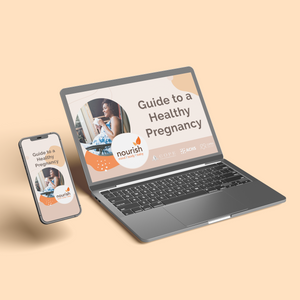
01. Guide to a Healthy Pregnancy
$55 -
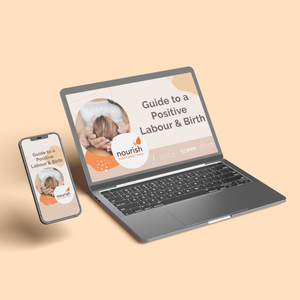
02. Positive Birthing Course
$55 -
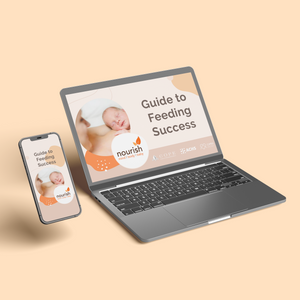
03. Infant Feeding Guide
$55 -
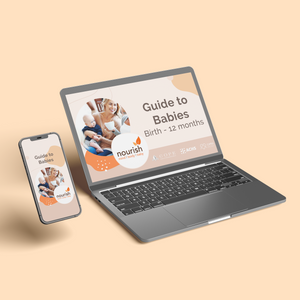
04. Baby Sleep Guide - First 12 Months
$55 -
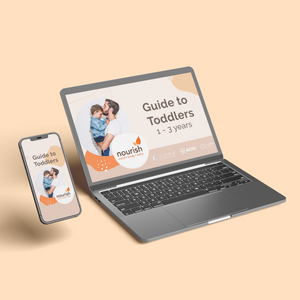
05. Toddler Parenting Course 1 - 3 Years
$55
-
 When to Start Antenatal Classes?
When to Start Antenatal Classes?
Becoming a parent is an incredible milestone, but it comes with a host of changes that can be daunting, especially for first time parents. Antenatal classes are all about offering expectant parents the education they need to make informed decisions, look after their bodies and care for their newborn babies. While you probably already have a long list of things you need to accomplish during your pregnancy, it’s a good idea to make time to attend antenatal classes.
-
 Development Milestones 4-8 Months
Development Milestones 4-8 Months
As they reach the middle of their first year, you'll start to see bigger leaps in their growth and ability!
In this article, we’re going to discuss your baby’s developmental milestones between 4-8 months, and what you can expect along the way.





 When to Start Antenatal Classes?
When to Start Antenatal Classes?
 Development Milestones 4-8 Months
Development Milestones 4-8 Months








